The W files 2
13
About :
I usually come across images from outdoor gear companies showing people in all sorts of adventurous outdoor situations. Beautiful, bright, inspiring, majestic. People look cheerful, and they glow with the aura of inspiration on their ruddy cheeks and eyes. I'm not criticizing or making a statement about commercialism. I love commercialism. I think that creating marketing graphics is an art in itself, and I myself have dabbled a bit in the past. What is often missing from those shots is the pain and sweat of actually getting to that point in the adventure. The messy details. When venturing outside with several pounds worth of gear, then you have to take certain considerations about what to carry, not unlike our hairy hunter-gatherer ancestors thousands of years ago.
I recently posted an image of gear that I took on a hike. The items consisted of an orange camera organizer with some photography hardware. I have never used most of those items in an extreme environment, so this was going to be a test.

Trail head towards the viewing point
The trails in the area were covered in snow, but given that this is an El Nino year with non-stop torrential rains, sections of the trails were also bare with water streaming down the slopes. This meant that I had to wear snowshoes to trek through the paths while carrying a 32 LB backpack, so I was rather unstable on my feet as I traversed the icy mountain trails. Besides a potentially painful fall and broken gear, this instability could also have an effect on the quality of the photographs because of jitter.
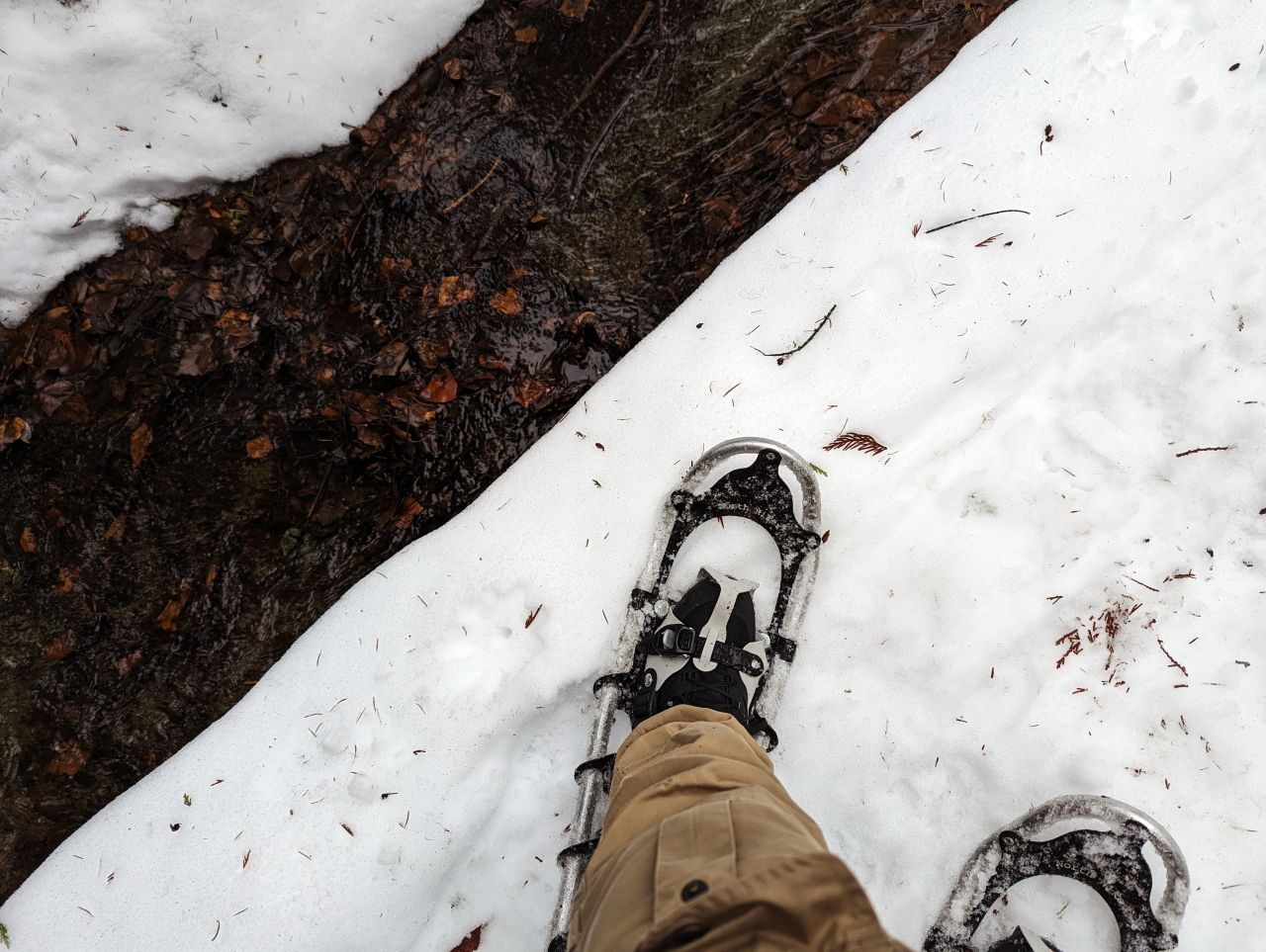
From past experience, I knew that trekking poles were a perfect way to turn yourself into a beast of burden, so I brought those as well. With trekking poles, you basically become a quadruped able to distribute the weight plus stabilize yourself in uneven terrain. I’m convinced that this hike would not have been possible without them. One drawback of trekking poles is that now your hands are full, so how can you carry camera gear and have it ready at a moment's notice, particularly when most of it is safely tucked in your backpack.
Initially, I realized that using the camera was next to impossible while hiking with the trekking poles, and so for the first leg of the trip, I used my Pixel 7 phone to take pictures and video. I could easily put it in my pocket and take it out when needed. Part of the issue was that I wanted to test a new teleconverter lens for my tough camera. By itself, the camera is small, but when you pair it with a lens, it becomes bulkier. I decided not too worry about it until I got to the first viewing point, where I would test my new gear. Carrying the phone was tricky and precarious. It is not a rugged device, so one misstep and bye-bye phone. Thankfully, I have a smartphone grip (product page) that converts the phone to a more traditional camera body. This helps in gripping the phone and stabilizing the image, which is very useful for video. At one point, I realized that I could put the phone in one of the many pockets of my Fjallraven bushcrafty pants. The handle stuck out, so I could just grab it and bam!

A teleconverter lens is different from a telephoto lens in that the teleconverter is akin to putting a telescope in front of the camera lens. This is a cheaper way to magnify images than a telephoto lens, but there are some trade-offs. I had recently purchased a teleconverter lens because the tough camera doesn’t have other options. I took the following image with the lens attached. I did not do any post-processing, so the images will not look as refined (except the last two. I couldn't help myself :).
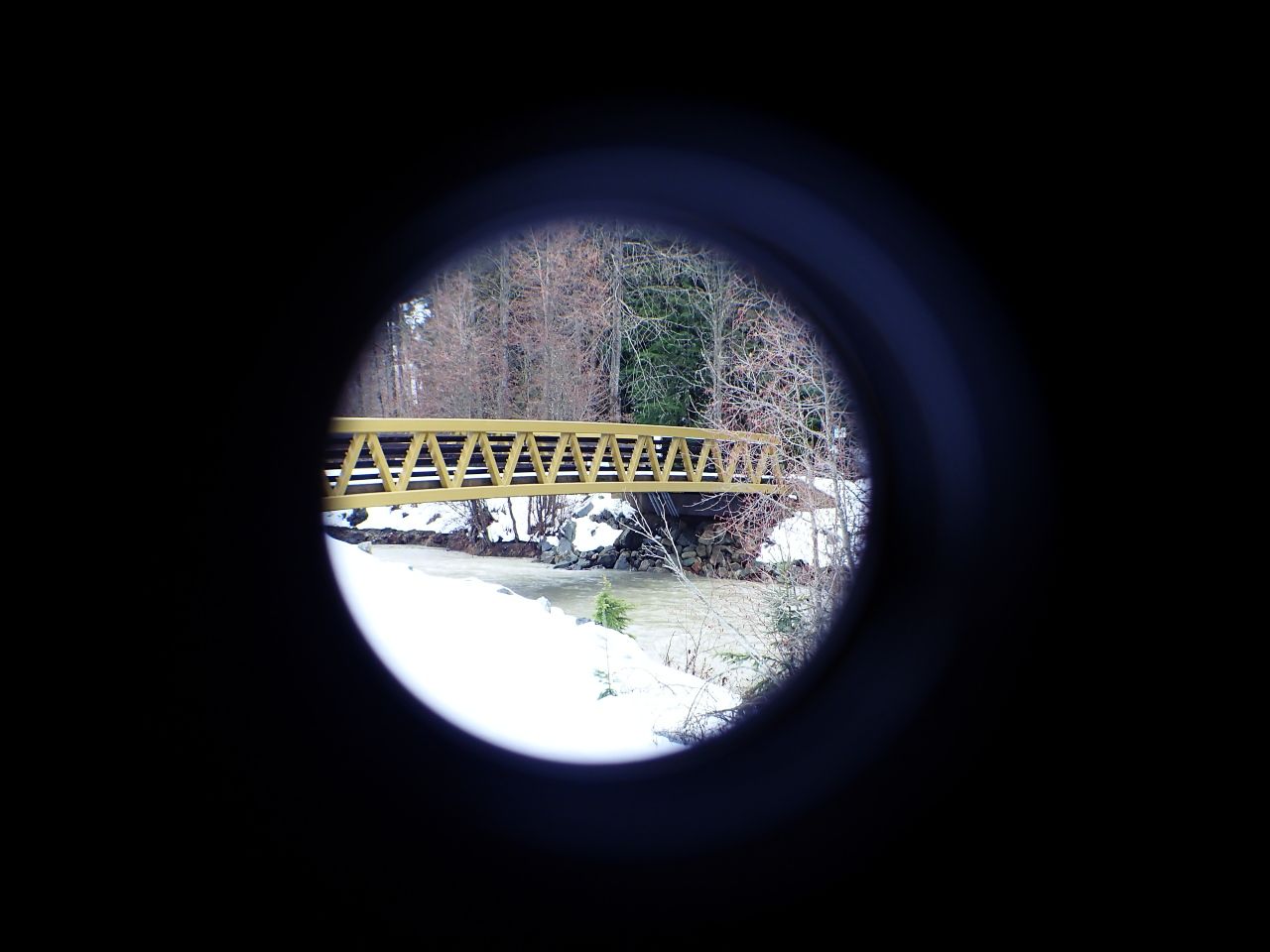
Focal length (35 mm conversion): 25 mm
Notice the pinhole effect when you take a picture with the lens attached and a focal length of 25 mm. To make it work better, you need to zoom in until the pinhole edges have disappeared. In the process, the field of view contracts, and you can no longer see the surrounding environment.
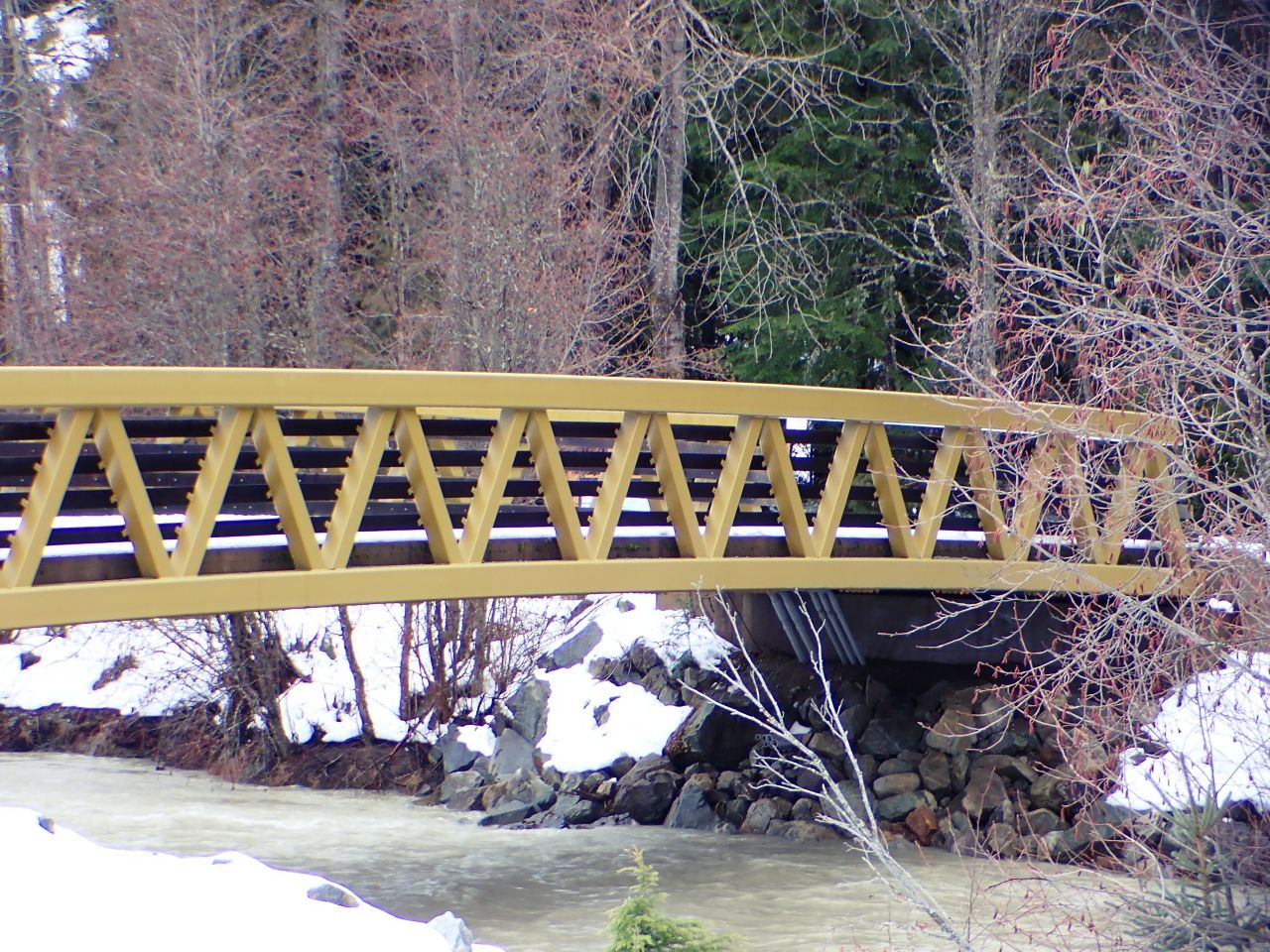
Focal length (35 mm conversion): 77 mm
This narrowing of the viewing field means that this lens is better suited to photograph specific subjects but not sweeping panoramas or vistas. I think it is perfect for geological features, plants, and wild life (unless it’s a large bear about to maul you). As I was hiking up a steep snowy slope, for instance, I saw a mushroom deep in the woods. I wasn't about to venture into the uneven terrain, so I used the camera with the lens to get a closer look at the specimen.
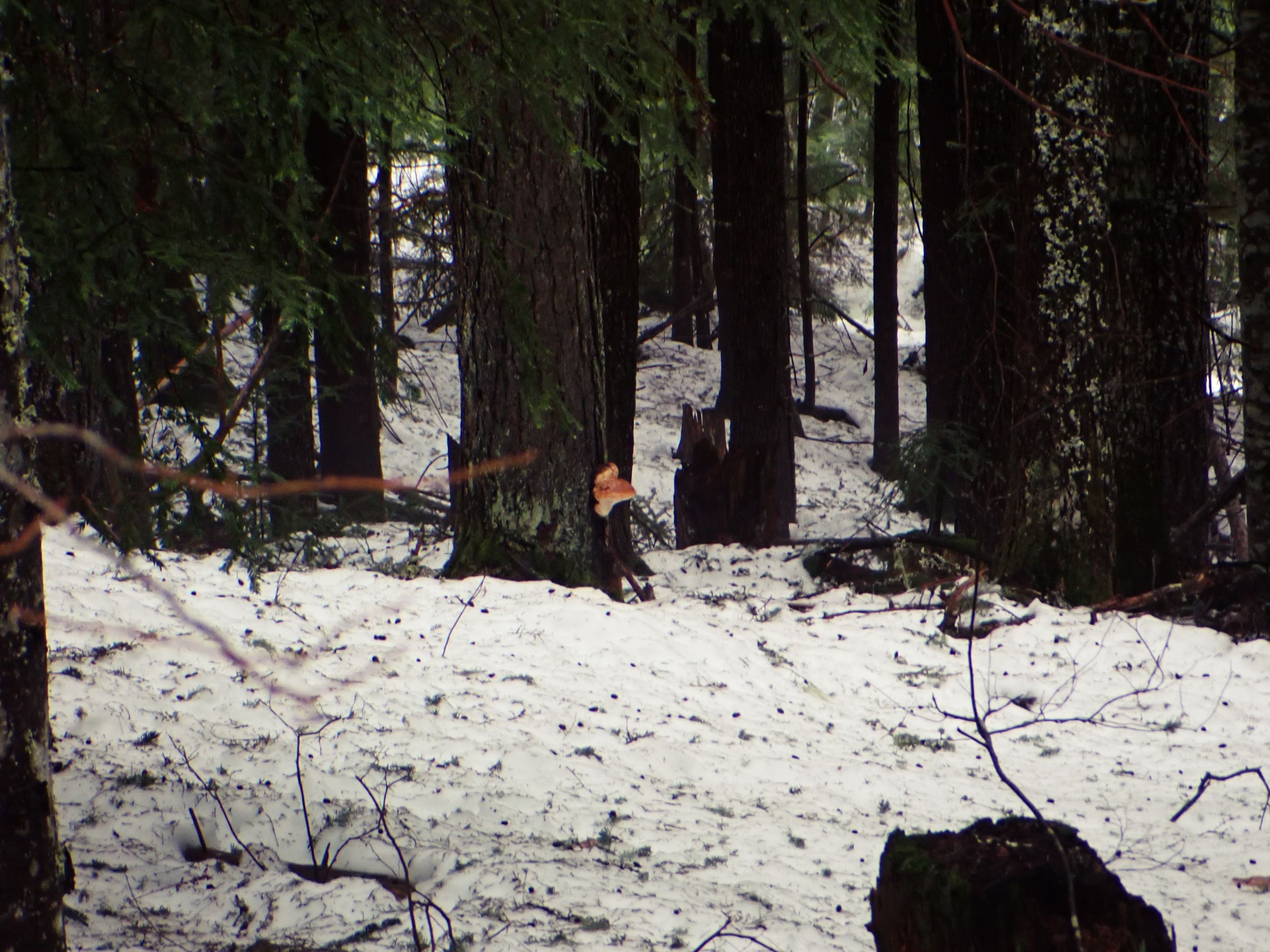
What a hardy mushroom to be growing in winter but it just goes to show how warm it has been this year
Up on the viewing spot overlooking the lake, I took pictures with the lens on and off to see the effect. One can definitely see things a bit closer than without it. The images are alright and could probably be improved with some fiddling, but I used a basic HDR setting, which means that the camera took multiple images quickly and then combined them to create deeper colors. It was probably the wrong setting to use with the lens. Another drawback of the lens is that because you have zoomed in closer, then there is more movement of the subject on the lens. A tripod is recommended for this setting to keep the camera still. I did not bring a full-sized tripod but did bring a tiny one that you can place on objects in the environment.
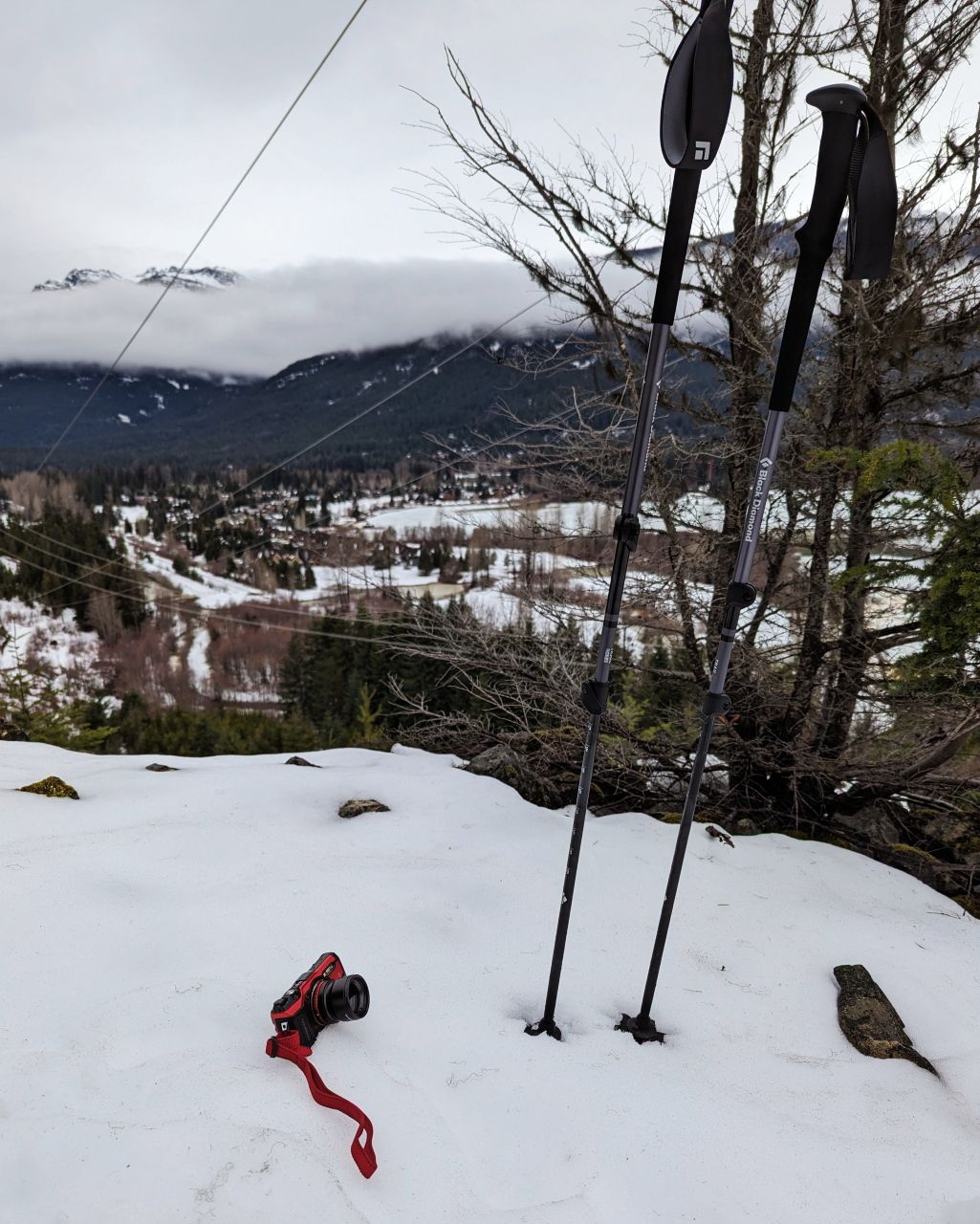
I wasn’t sure what to expect with this lens and whether I would have buyer’s remorse later, but as soon as I saw the results, I knew I had a winner. I was still miffed that I could not use it on the trail. What if I came across a deer? A bird? An abominable snowman? Given that I already had the phone in one pocket, I decided to see if the camera would fit in the other with the lens attached. To my delight, the camera sensually slid into my Fjallraven pants and a shiver of delight electrified my ancient circuits as the camera snugly fit in the pocket. Really. So there I was on the mountainside hiking with a phone dangling in one pocket, and the camera in the other. Each item had its own purpose, and what a riot it was to use them both as meandered like a jackrabbit up and down and around those slopes.
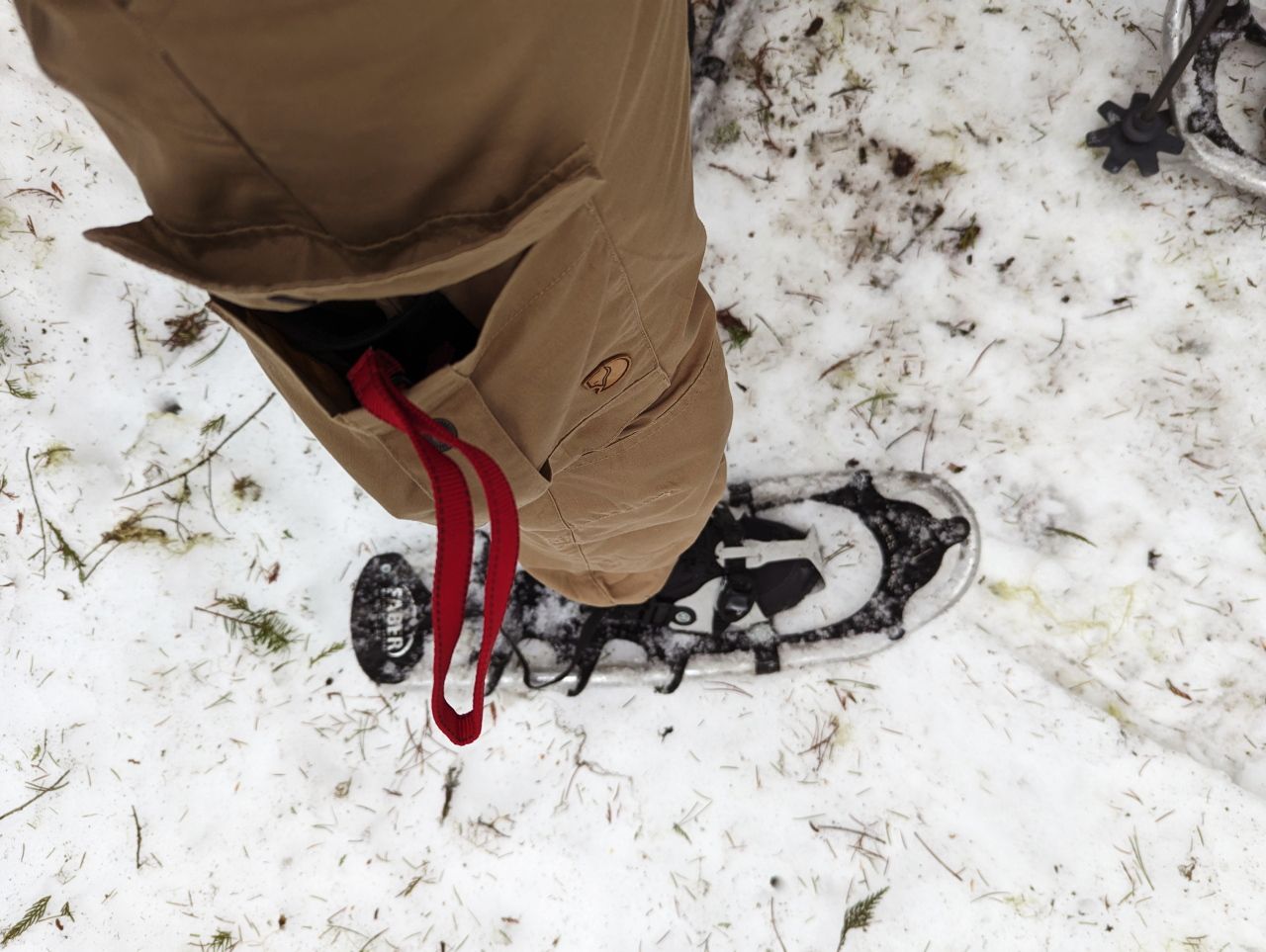
I did not use the camera for this hike very much, I ended up using my Pixel phone. It was basically a matter of convenience and quality. I think the lens is better suited for the type of photography where you need to focus in a specific subject and you take the time to work the dials and buttons to get a good image. But when you're also dealing with the harsh elements around you, then all you can really think about it is making it out alive, so the phone is a more convenient device. It's great to have the choice and opportunity of using either in any given situation. So, I make sure to give thanks to the Photography Goddess every day.
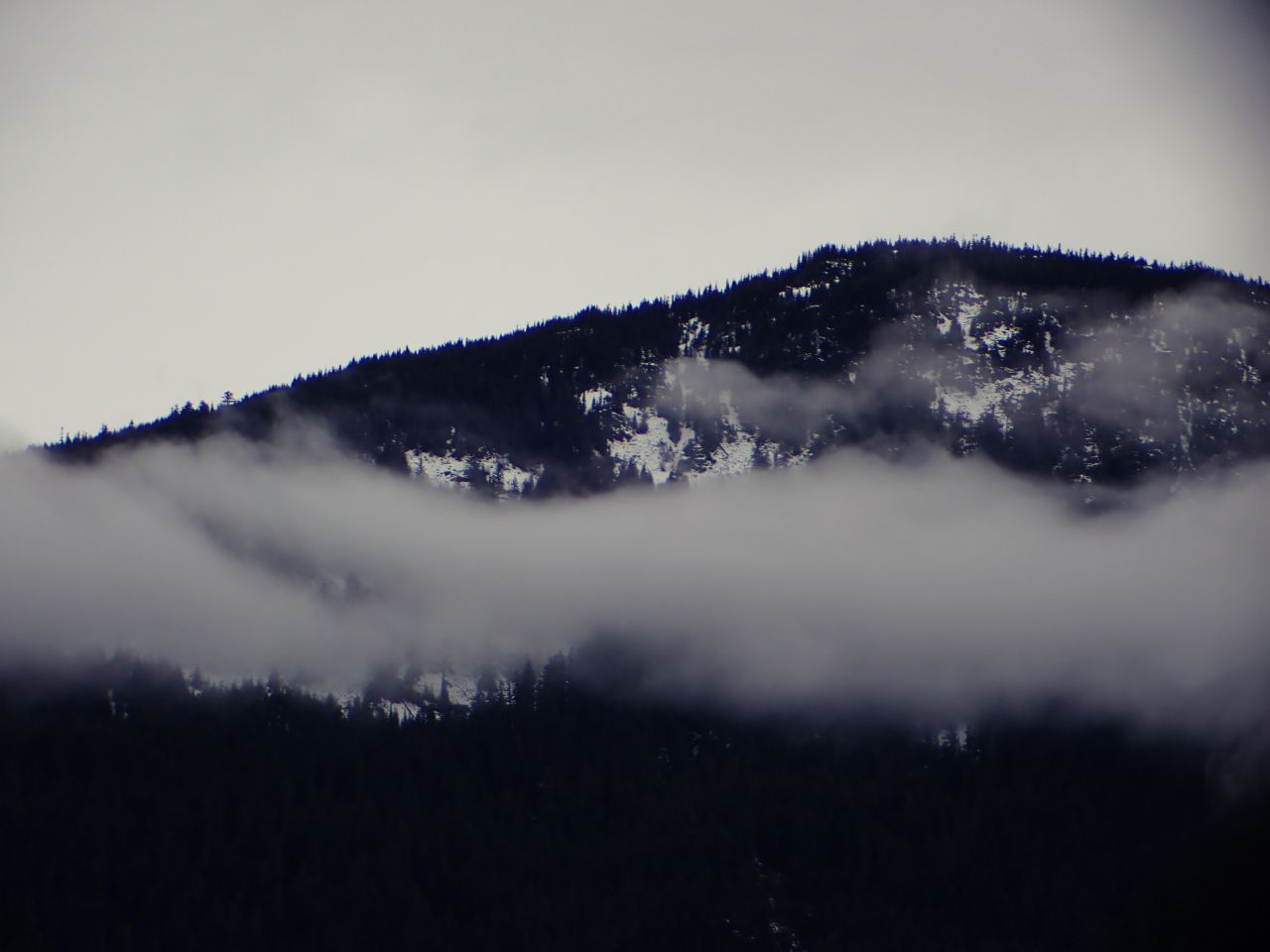
Notice how dark this photograph is. While it was a cloudy day, putting on the lens made the photograph darker in this instance. Notice the edge of the pinhole on the upper right corner of the image

The light on this photograph is much better and more true to the environment
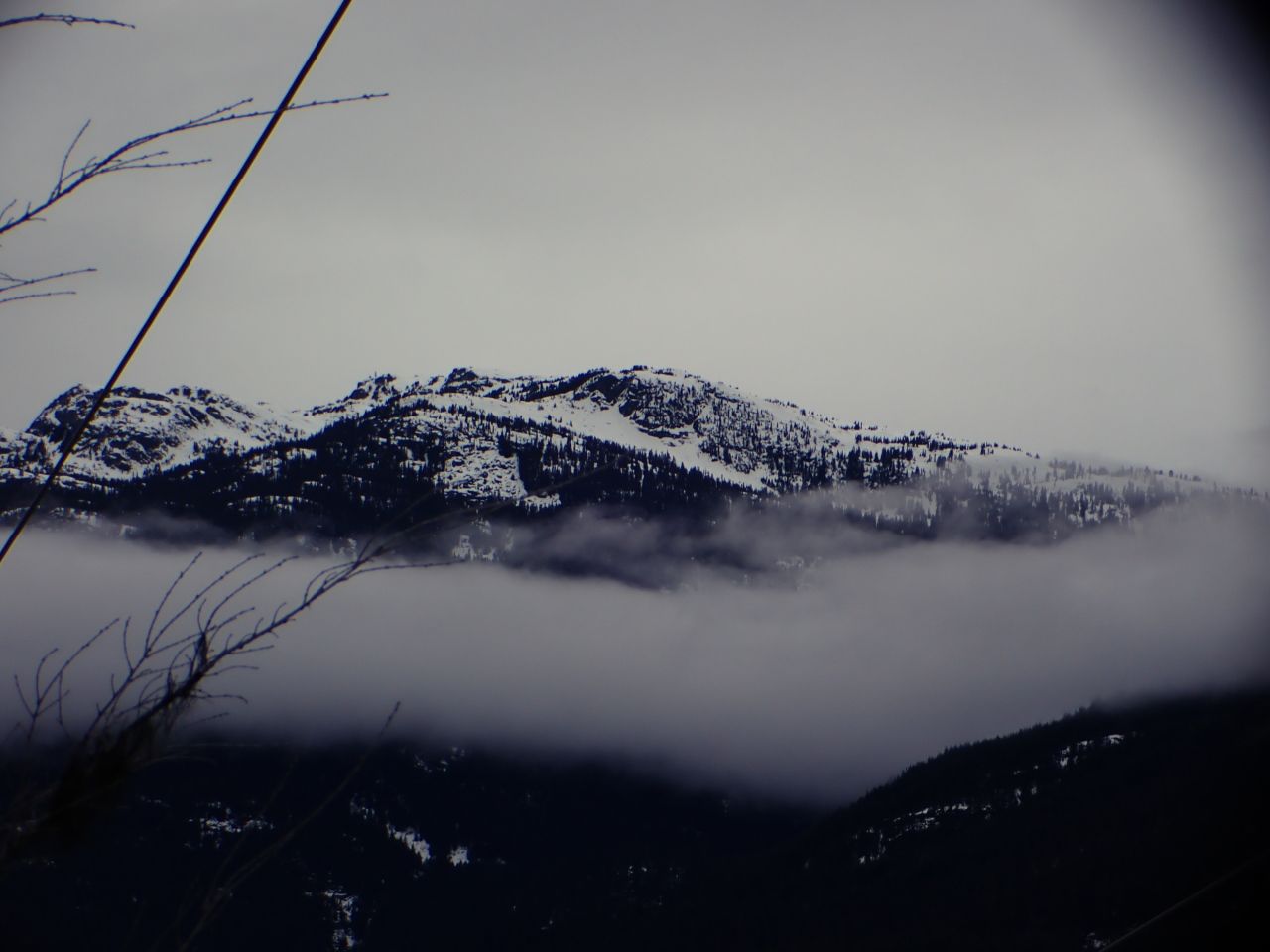
To demonstrate the capacity of the lens, notice the difference between the following two images.
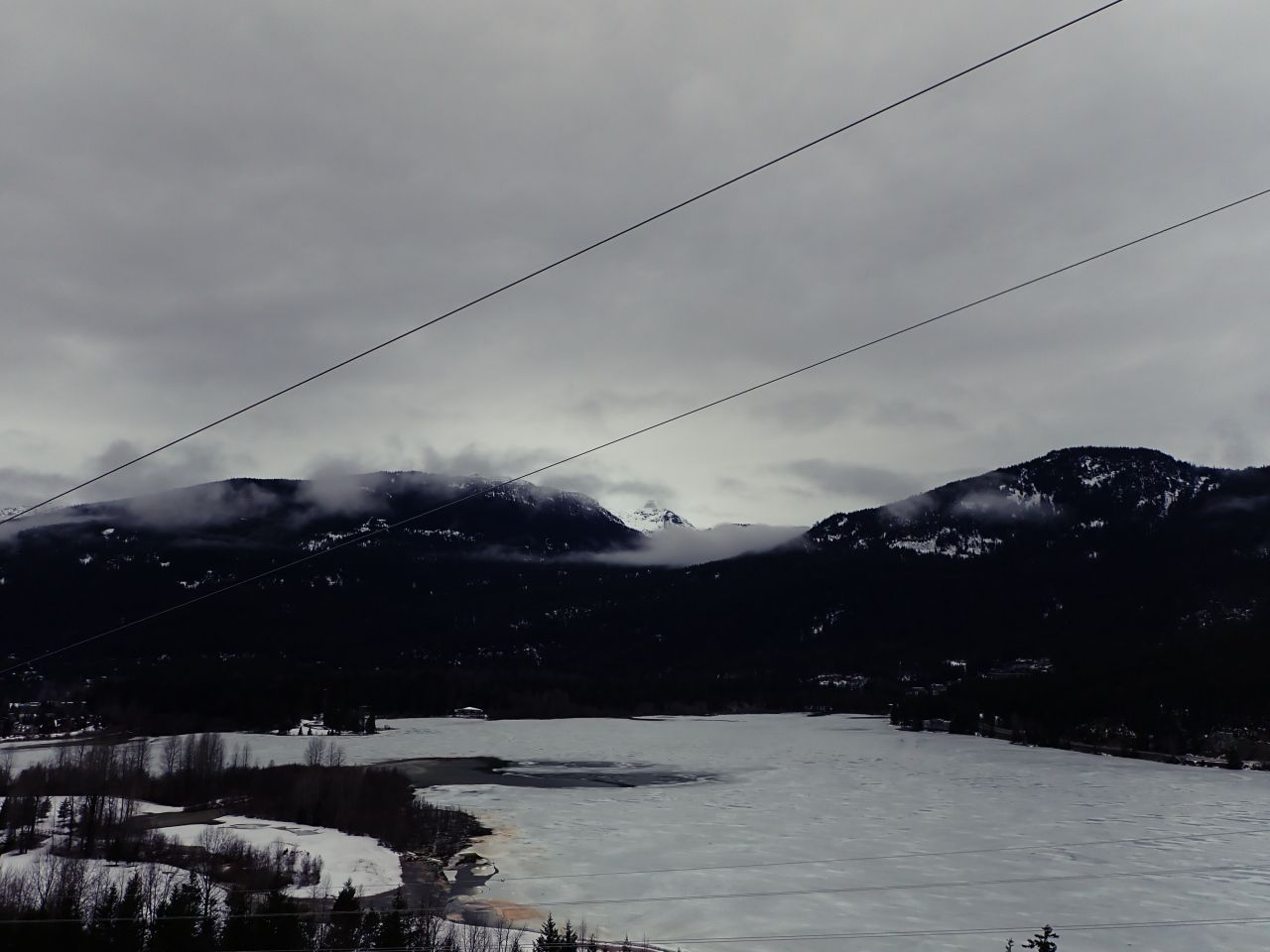
This photography was taken without the lens and focal length (35 mm conversion) of 25 mm. Notice that the snowy peak in the distance is barely visible.
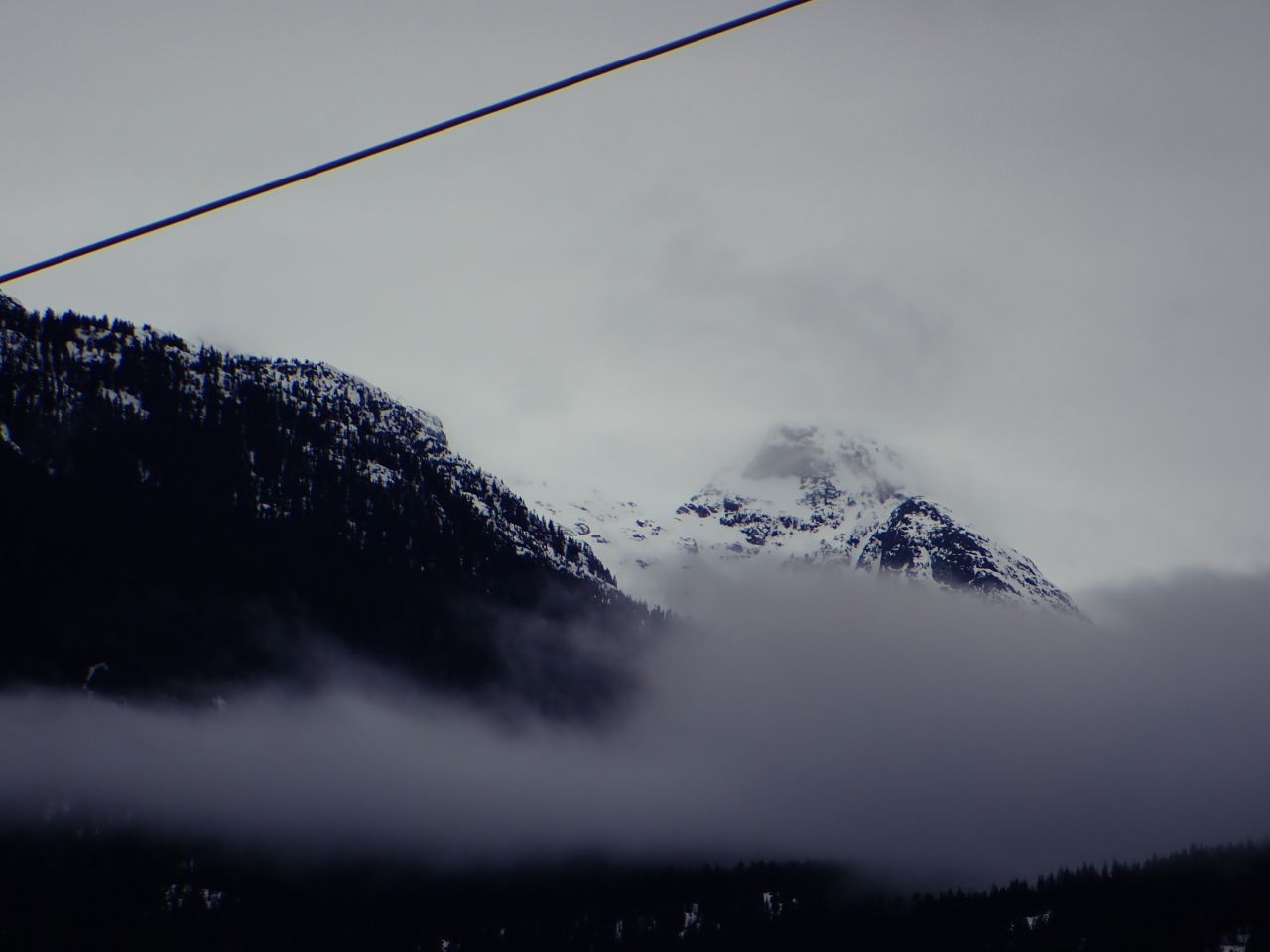
This photograph was taken with the lens attached and focal length (35 mm conversion) of 100 mm. More details are discernable on the peak. Trees have more texture and even the wispy structures of the clouds are more clear. On the other hand, the surrounding mountains are no longer visible because of the smaller field of view.
The effect of the teleconverter lens is very much like looking through a telescope to see distant scenes. It comes with trade-offs and a learning curve as you adjust to the changing conditions.
I also tested a monocular telescope with the pixel 7, so I will be discussing that next. Thank you for coming along and happy trails.

Without lens
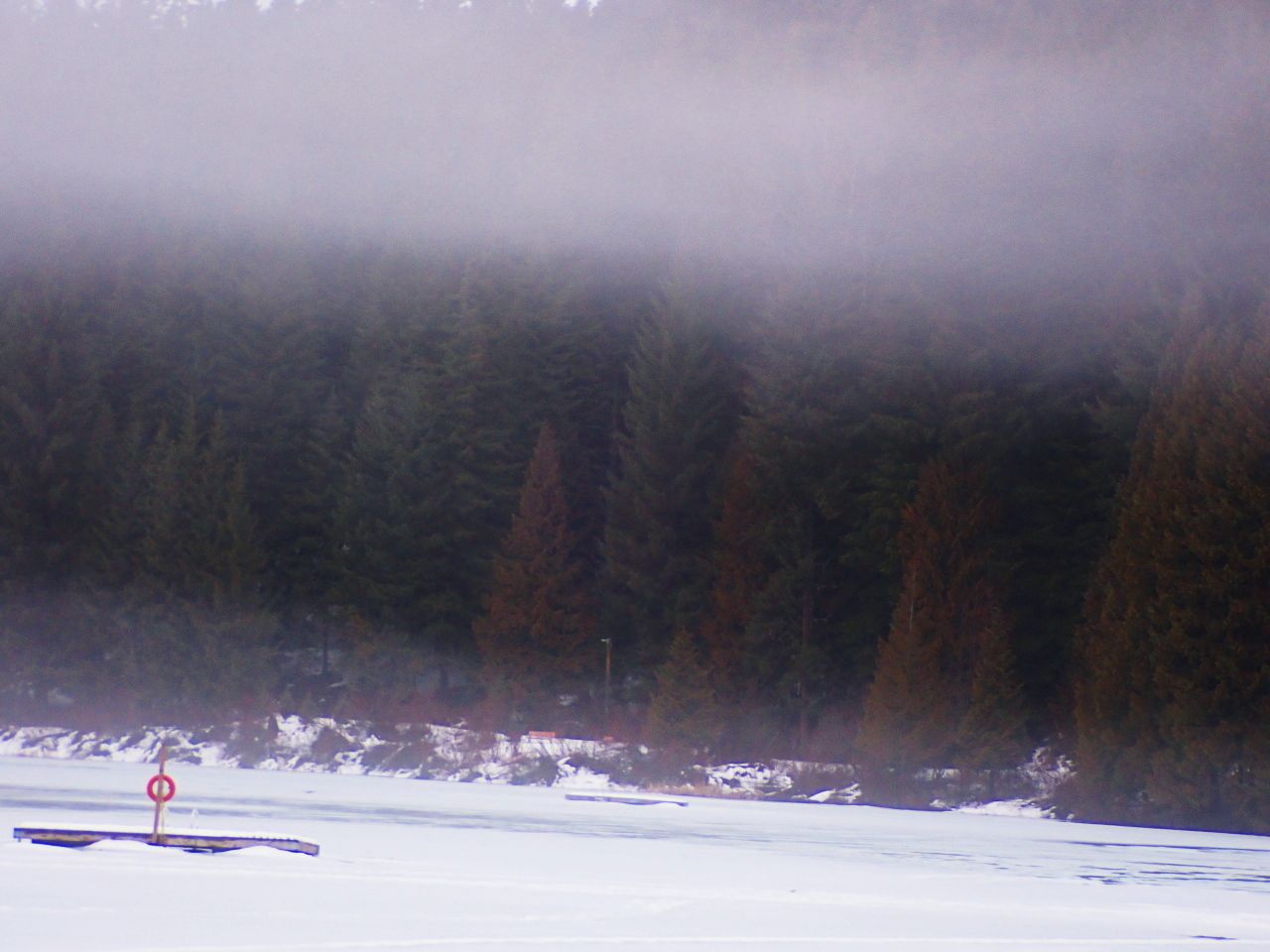
With lens attached
Explore the W files
1, 2
Images by @litguru
Tags :
Their limit for today is $0!
More Videos
@usainvote: 0.4533
@xeldal: 0.4410
@delishtreats: 0.2914
@enki: 0.1856
@empo.voter: 0.1670
@ocd: 0.1473
@agmoore: 0.1226
@meritocracy: 0.1000






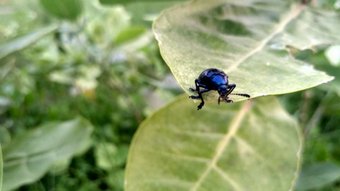



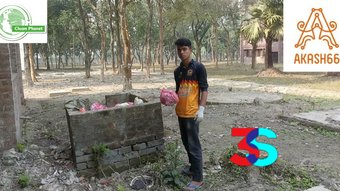

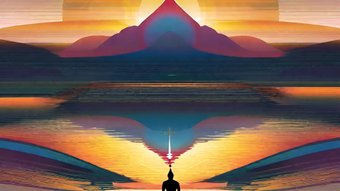

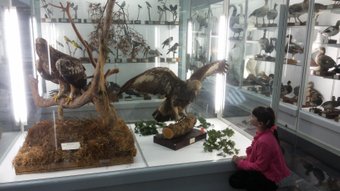

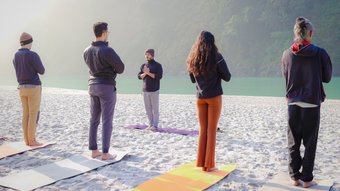


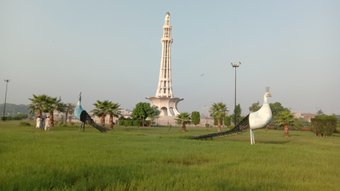
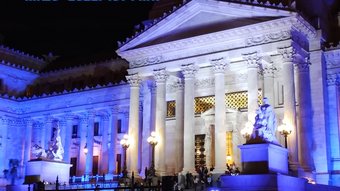
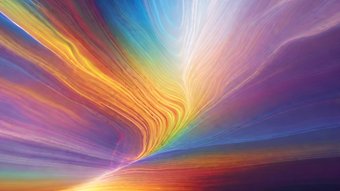

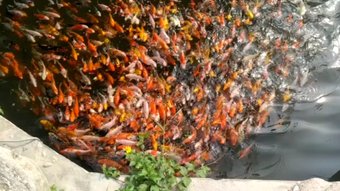




Comments:
Reply:
To comment on this video please connect a HIVE account to your profile: Connect HIVE Account